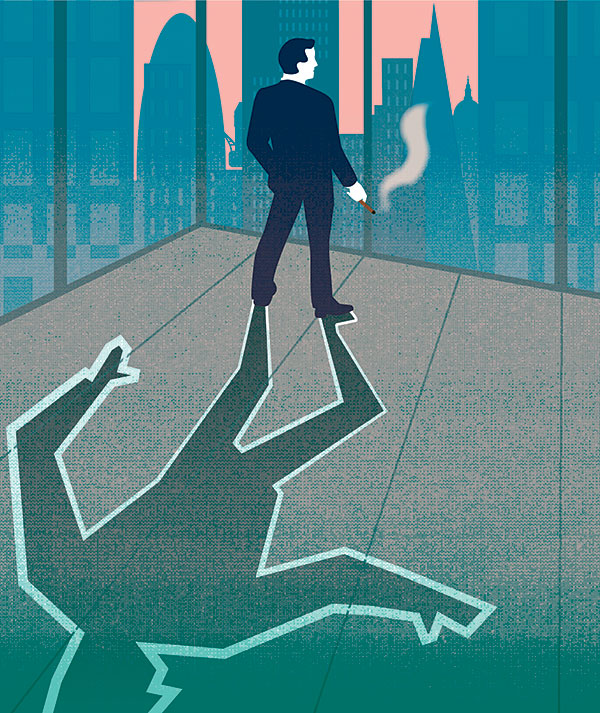Consumer fightback against online marketing is ramping up
Roula Khalaf, Editor of the FT, selects her favourite stories in this weekly newsletter.
For both clients and agencies, advertising was once the nearest management got to being sexy. Advertising was interesting and fun. Big campaigns were feted, as were their creators. In London, Charlotte Street was for some a stepping stone to Hollywood. The Saatchi brothers advised Margaret Thatcher. At the pinnacle of their power in 1987, following their own mantra that “nothing is impossible”, they planned to take over the then Midland Bank.
Appearances were always flattering. “Advertising often looms larger than it should,” says Prof Patrick Barwise, doyen of marketing at London Business School. But even the image-industry can no longer disguise the fact that it is facing something of an existential crisis. The cause is that disrupter-in-chief of other sectors: the internet. In a familiar pattern, a technology that first dazzled with its possibilities has wriggled out of the users’ control and now threatens to take them to a different destination than the one they originally envisaged.

In the 1990s, online and digital technologies seemed to promise answers to every adman’s prayers since the industry’s birth in the 1920s. The internet would slay the inefficiency of mass media. All communication would henceforth become one to one and advertisers would finally be able to measure which half of their ad spend was wasted. Online advertising would be scientific as well as cool.
It has not quite worked out like that. Digital advertising has certainly fulfilled the optimists’ growth predictions. With about $600bn spent on all advertising worldwide annually, in the next two years online will probably overtake TV’s one-third market share to become the largest component of that pot. Online has already largely digested the classified adverts that subsidised newspapers.
But online growth has brought as many problems as answers. The consumer has traditionally tolerated advertising, which, after all, was always more a service to advertisers than to them because of the straightforward value exchange it represented: their attention in return for free content in online newspapers, TV and magazines.
But the online deal is rather different, notes Ctrl-Shift, a London-based digital consultancy. Internet users now pay for advertising not only with their attention and the increased price of goods due to companies’ advertising costs, but also in the bandwidth bought from their internet service provider; in the bandwidth consumed by the advert, correspondingly reducing the value of the service; and in the unregulated intrusion of ads into the online experience.
Above all, they also pay for it in surrendering personal information that is collected and sold back to advertisers for a “capitalist micro-assault [that] is, from all directions at all waking moments . . . getting much more intense, focused, targeted, unyielding and galactically more boring”, in the apocalyptic words of Canadian artist Douglas Coupland in a 2015 column in FT Magazine.
But the consumer is fighting back. The revolt — not too strong a word — and the centre of today’s advertising crisis is the vertiginous growth of ad blocking. According to Irish consultancy PageFair, 200m online users and 420m smartphone owners have installed ad blocking software, respectively a 41 per cent and 90 per cent annual surge. Consumers and advertisers are at war. This is hardly good for the advertising industry or its clients. But as in all warfare, this one also inflicts collateral damage — in this case, on publishers, which last year lost revenues of $22bn to ad blocking, a sum that they can ill-afford.
This is not just a blow for the hard-pressed purveyors of news. Even without ad blocking, online has not proved the panacea for advertisers that they had hoped. Largely unpoliced, where the click is king, internet advertising is prey to bots (programmes used to perform highly repetitive operations, such as trawling websites to collect emails), clickbait (a link on a website that encourages people to read on) and other dubious practices.
There are no impartially agreed metrics or research; however, it is an ill wind. Some believe doubts about the transparency of the online industry could lead advertisers to have a fresh look at the benefits of print media.
“Do advertisers and agencies really want a world where there is no national, quality journalism or culturally specific entertainment to place their ads in?” asked one industry figure recently. It is a question that transcends the agency worlds of Charlotte Street and New York’s Madison Avenue. Sceptics have doubted advertising’s claim to be strategic but this time few would question the importance it has always craved, even if it is the spending rather than creative decisions that matter most.
Comments